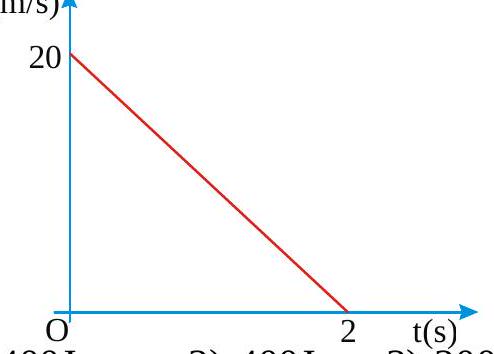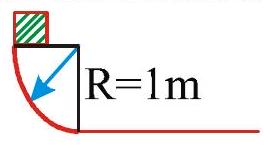268842 An object of mass\(5 \mathrm{~kg}\) falls from rest through a vertical distance of \(20 \mathrm{~m}\) and attains a velocity of \(10 \mathrm{~m} / \mathrm{s}\). How much work is done by the resistance of the air on the object \(\left(\mathrm{g}=10 \mathrm{~m} / \mathrm{s}^{2}\right)\)
268844 Anout fielder throws a cricket ball with an initial kinetic energy of \(800 \mathrm{~J}\) and an infielder catches the ball when its kinetic energy is \(600 \mathrm{~J}\). If the path of the ball between them is assumed straight and is \(20 \mathrm{~m}\) long, the air resistance acting on the ball is
268842 An object of mass\(5 \mathrm{~kg}\) falls from rest through a vertical distance of \(20 \mathrm{~m}\) and attains a velocity of \(10 \mathrm{~m} / \mathrm{s}\). How much work is done by the resistance of the air on the object \(\left(\mathrm{g}=10 \mathrm{~m} / \mathrm{s}^{2}\right)\)
268844 Anout fielder throws a cricket ball with an initial kinetic energy of \(800 \mathrm{~J}\) and an infielder catches the ball when its kinetic energy is \(600 \mathrm{~J}\). If the path of the ball between them is assumed straight and is \(20 \mathrm{~m}\) long, the air resistance acting on the ball is
268842 An object of mass\(5 \mathrm{~kg}\) falls from rest through a vertical distance of \(20 \mathrm{~m}\) and attains a velocity of \(10 \mathrm{~m} / \mathrm{s}\). How much work is done by the resistance of the air on the object \(\left(\mathrm{g}=10 \mathrm{~m} / \mathrm{s}^{2}\right)\)
268844 Anout fielder throws a cricket ball with an initial kinetic energy of \(800 \mathrm{~J}\) and an infielder catches the ball when its kinetic energy is \(600 \mathrm{~J}\). If the path of the ball between them is assumed straight and is \(20 \mathrm{~m}\) long, the air resistance acting on the ball is
268842 An object of mass\(5 \mathrm{~kg}\) falls from rest through a vertical distance of \(20 \mathrm{~m}\) and attains a velocity of \(10 \mathrm{~m} / \mathrm{s}\). How much work is done by the resistance of the air on the object \(\left(\mathrm{g}=10 \mathrm{~m} / \mathrm{s}^{2}\right)\)
268844 Anout fielder throws a cricket ball with an initial kinetic energy of \(800 \mathrm{~J}\) and an infielder catches the ball when its kinetic energy is \(600 \mathrm{~J}\). If the path of the ball between them is assumed straight and is \(20 \mathrm{~m}\) long, the air resistance acting on the ball is
268842 An object of mass\(5 \mathrm{~kg}\) falls from rest through a vertical distance of \(20 \mathrm{~m}\) and attains a velocity of \(10 \mathrm{~m} / \mathrm{s}\). How much work is done by the resistance of the air on the object \(\left(\mathrm{g}=10 \mathrm{~m} / \mathrm{s}^{2}\right)\)
268844 Anout fielder throws a cricket ball with an initial kinetic energy of \(800 \mathrm{~J}\) and an infielder catches the ball when its kinetic energy is \(600 \mathrm{~J}\). If the path of the ball between them is assumed straight and is \(20 \mathrm{~m}\) long, the air resistance acting on the ball is


